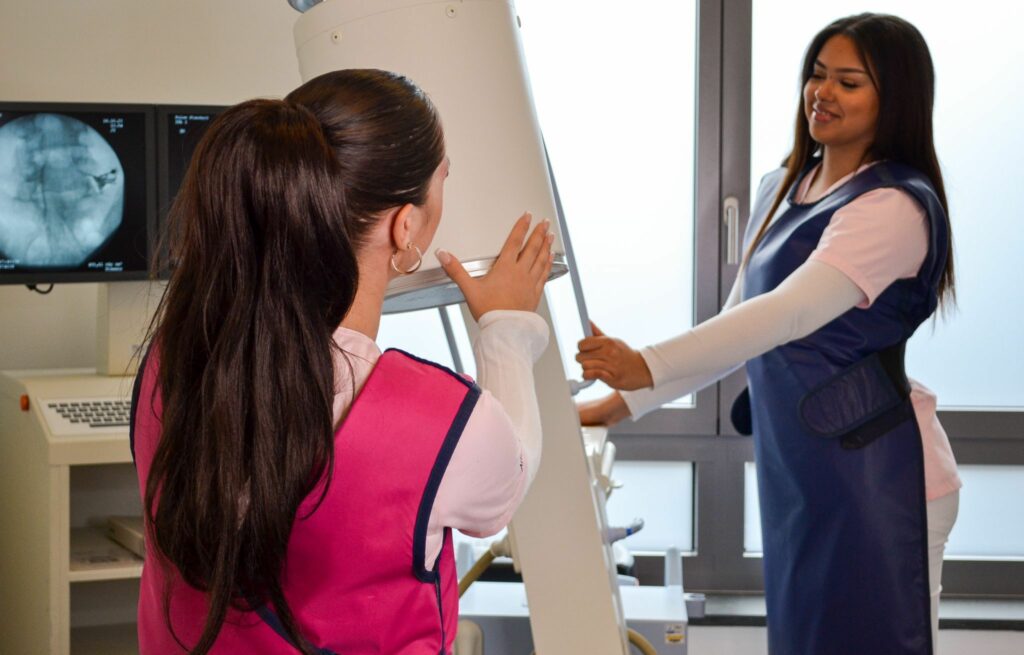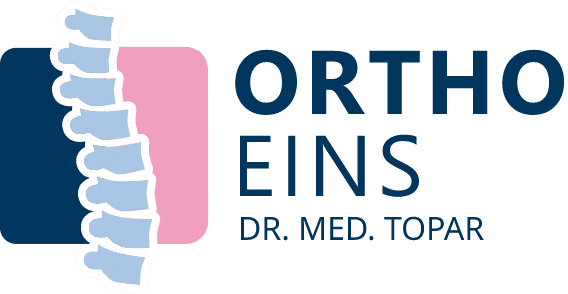Hip
Focus of the practice
Orthopaedist for hip disorders in Berlin
The hip enables leg movements in all directions: Stretching, bending, spreading, pulling, turning. If these movements are only possible to a limited extent or cause pain, the cause may be a disease of the hip joint. Or the reason may lie in the tendons, ligaments and muscles that are part of the hip’s musculoskeletal system.
INNOVATIVE DIAGNOSTICS AND INDIVIDUAL TREATMENT OF YOUR HIP DISEASES
Dr. Topar, our hip specialist in Berlin Zehlendorf, welcomes you to our private orthopaedic practice and takes plenty of time for each patient. A comprehensive medical history and diagnosis as well as a personal treatment plan ensure the individual treatment of your hip condition. The specialists at ORTHO EINS will be happy to help you with any questions you may have about hip surgery.

DETAILED DIAGNOSTICS FOR HIP DISEASES
Overloading or wear and tear, injuries, accidents and chronic illnesses can lead to restrictions in the hip. Knowing the cause of the symptoms is the elementary basis for effective treatment and therapy. That is why the ORTHO EINS hip specialists for Berlin Lichterfelde, Steglitz, Schmargendorf, Dahlem and other districts pay particular attention to diagnostics. A detailed medical history and innovative diagnostic procedures make it possible to get to the bottom of the disease.
These diagnostic methods are available to us in the area of hip diseases:
- Medical history and clinical examination
- Sonography (ultrasound)
- Imaging procedures (X-ray, MRI, CT)
- Sports medical examination
SPECIALIST FOR HIP ARTHROSIS, HIP DYSPLASIA & OTHER DISEASES OF THE HIP JOINT
Hip surgeons differentiate between congenital, inflammatory, acute, chronic and degenerative hip diseases.
Osteoarthritis of the hip joint (also known as coxarthrosis) refers to wear and tear of the hip joint and is a common degenerative disease that occurs mainly in older people. At ORTHO EINS, you will find specialists in hip osteoarthritis who can diagnose the condition precisely and treat it effectively.
Hip dysplasia is a congenital malformation of the hip joint that affects up to four percent of newborns. This makes hip joint dysplasia not only one of the most common congenital hip diseases, but also one of the most common congenital malformations of all. The consequences of hip dysplasia can be hip arthrosis and pain. Hip dysplasia is often not discovered until the teenage years. The earlier a pediatric orthopedist is consulted if this is suspected, the better the chances of preventive treatment. However, our hip dysplasia specialists can also recognize the disease later on and alleviate symptoms.
Other common disorders of the hip joint for which you should consult a hip specialist:
- Bacterial hip diseases
- Rheumatic diseases
- Fractures and trauma damage
- Dislocation of the hip joint (dislocation)
- Necrosis of the femoral head
- Hip impingement
- Damage caused by tumor diseases in the joint area
MINIMALLY INVASIVE & CONSERVATIVE THERAPIES
As an orthopaedic surgeon and hip specialist in Berlin, Dr. Topar focuses on conservative and minimally invasive therapies. In many cases, these are just as effective as hip surgery, but involve less risk and shorter rehabilitation times. If an operation is absolutely necessary, we will be happy to provide you with accompanying treatment.
Conservative therapies, medicinal and physical therapies, including chirotherapy/manual therapy, shock wave therapy, injections with hyaluronic acid, magnetic field, laser, radio frequency and autologous blood therapy, are effective and proven without any surgical intervention.
Minimally invasive therapies are the focus of the Berlin orthopaedic surgeons and hip specialists at ORTHO EINS. Joint injections and joint irrigation under local anesthesia act directly on the source of pain in the joint. Cortisone preparations, autologous blood preparations and painkillers counteract inflammation and pain. Discomfort caused by friction, for example in osteoarthritis, is often caused by joint adhesions, which can be counteracted by flushing the joint. These two methods are often used in combination.


